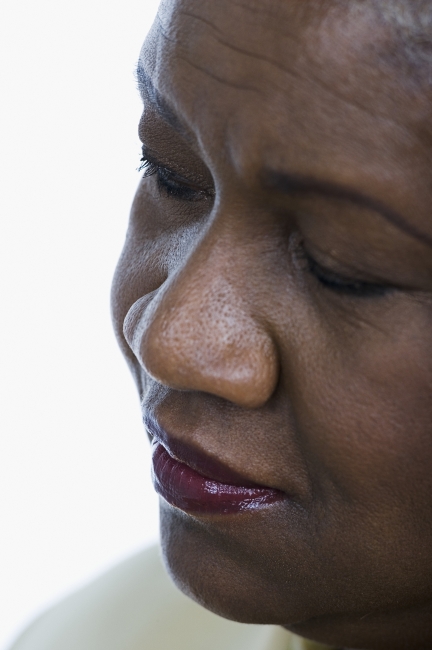You have /5 articles left.
Sign up for a free account or log in.

Getty Images
You probably don’t want to be reading this any more than we want to be writing it. Documenting racism, sexism, and classism in American society – especially in institutions of higher ed, which are allegedly supposed to be at least somewhat enlightened about these issues -- is a real downer. It is also exhausting … and was not part of the dossier we were handed when we agreed to teach at said institutions.
However, given our combined experiences over the years, as well as the fact that multiple women of color have reached out to us from multiple kinds of institutions and departments, and while facing many different kinds of distress and institutional oppression, we thought it might be helpful to provide a set of strategies – ground rules, if you will – to survive in these spaces, both professionally and personally, especially if you are being targeted.
A quick primer: Shannon Gibney is tenured faculty in English at Minneapolis Community and Technical College, where she was found guilty of racially discriminating against two white male students during a discussion about structural racism in a Mass Communications class last fall. After going public about the incident, and filing a grievance with her union, the letter of reprimand she received because of this college-determined violation was removed from her permanent file. Ironically, the ruling that she violated these students’ civil rights still stands, however.
KC Williams is contracted faculty in sociology at Coastal Carolina Community College. In May 2014, a student brought a noose to school to threaten her,two months after he dropped her class. The local district attorney prosecuted the student, and he was found guilty of ethnic intimidation and communicating a threat; however, the college has been much less supportive. Both of us are African American women.
So, given all this, and the relative success we have had surviving (not thriving, mind you) in these minefields of structural racism and sexism, we thought we would offer these few strategic morsels to mull:
Recognize that you are not alone. The first step in oppressing and dehumanizing another person is making them feel like they are “losing it,” “overreacting,” “unprofessional,” etc. Whether you are the victim of an “incident” like we were, or just suffer the ongoing underlying malaise of institutional bias in your teaching, research, and service, understand that there are, unfortunately, many, many others just like you, going through it all of over the country and world. The problem is definitely not you, but structural and historical.
In “Contrapower Harassment and the Professorial Archetype: Gender, Race, and Authority in the Classroom,” NiCole T. Buchanan describes the micro level interactions that occur to women of color in academe (Buchanan and Bruce Fall 2004, Winter 2005).
Reach out to friends and allies for support. Very much related to #1, you must cultivate deliberate and often counter-cultural support in order to maintain your health, sanity, and endurance in what is often a hostile workplace for women of color.
While many of your friends and allies may be other women of color, don’t automatically assume that just because someone is a “brother” or “sister” they will get it, or be supportive. The systemic nature of racism and sexism makes it difficult for people of color to be able to speak up on your behalf. To do so may jeopardize their positions, and chances are likely that they are isolated there as well.Racism is isolating, and that isolation is counterproductive to institutional change.
Likewise, don’t assume that just because someone is white or male, they won’t. What you are trying to do is build a political community, and although race and gender definitely play an important role in this, they are not always the determining factor.
Engage the institution.When shame is the institution’s way of keeping you out, actively engaging with the institution helps rebuff the negative label. Pursue your interests on campus and refuse to be silenced. If you have an interest in student clubs, offer to advise. If you sing, join the campus choir. If you like to exercise, work out at your campus facilities and have a visible presence.
Part of silencing and shaming involves isolating people. Refuse to be tucked away and treated like an outsider on your own campus. You’re a stakeholder on your campus, and even if others are actively working to shut you out, do what makes you happy and what makes you feel productive.
Document everything. Keep both digital and actual files and copies of every biased, discriminatory, or problematic interaction you have at your institution, including any witnesses who overheard or saw the event. And don’t keep any of it in your office, or at work. If you have an offensive conversation with a superior, for example, write down exactly what happened or was said right after it happened. Most schools will operate in an intensely legalistic way, so you will need to do so as well to protect yourself. Remember, should you find that you need to file an EEO complaint, your documentation will be vital to the viability of your case. The onus of documentation is always on the victim.
Work to understand the political landscape of your institution before assuming that using its own mechanisms for discriminatory redress will actually help you. The sad fact of the matter is, in this particular moment, so many of our institutions and the people who run them are so aligned with the status quo, and so driven by things other than justice (such as money and status), that reporting something to your campus Legal Affairs office, or filing a complaint with your campus Affirmative Action Officer, may actually turn you into an institutional target, rather than truly address your issue and/or situation.
Of course, this is not always true – some institutions are definitely healthier than others, and if you find someone in management or leading one of these offices who is sympathetic, by all means, work with and lean on them. What we are calling for, however, is a critical assessment of the offices, departments, and leadership of your institution before assuming that they are really there to help you. Unfortunately, many women of color have discovered an alarming trend that these legal, administrative, and other bodies actually exist to protect the institution and those that govern it, not necessarily its students or employees.
Look for support outside the institution. This is what has kept both of us sane throughout our ordeals. We connected with friends, neighbors, and colleagues in our wider community to fight back and build more formal networks of resistance. Local community organizers of color were highly effective in one case, in terms of mobilizing folks who care deeply about social justice and education, even forming their own group to demand change from the institution and publicly funded state system, and in the other case, these groups and friendships provided much needed relief and restoration.
File with the EEOC or a private lawyer if your case rises to that level. Unfortunately, part of getting support outside the institution is also getting legal support. If you believe that you have been targeted and/or discriminated against because of your race, sex, religion, etc., you may find it worth your time to file a complaint against your institution with the EEOC. This is less about the outcome of the complaint than it is about you having a place to send all of the ongoing discriminatory actions you are experiencing, rather than having it occupy your emotional and intellectual space.
Remember that the EEOC is tasked with being impartial, however, so you may very well want to hire your own private lawyer if you feel you have a strong case, and have the resources. This is very depressing, but we would advise every woman of color faculty member to start a rainy-day legal fund (or support those already created just in case, so that you have real options if and when you are discriminated against.
Talk to your union if you have one … but don’t assume that their interests are your own. Although some faculty unions, like most unions, have been thoroughly eviscerated in this country, many still offer formal grievance processes and other opportunities for redressing institutional wrongs done to faculty. Shannon’s union was immensely helpful in lifting her letter of reprimand, through an arbitration process that management ultimately decided was not worth it, if the findings went public. However, even a cursory examination of the history of unions in this country show their dismal track record at adequately representing the interests and issues of people of color.
This is also true of faculty unions, which are often overly conciliatory to management in today’s anti-union atmosphere, and whose membership and leadership are still predominantly older, white, and middle class. They can and will sometimes fight for you and other faculty of color, but too often, we find that they determine that it is far more politically expedient not to.
Make self-care your priority. With health crises in communities of color in diabetes rates, high blood pressure, depression and anxiety, and a host of other stress-related ailments, we cannot underscore the importance of making sure you take care of you. There is now a large body of research that conclusively shows a powerful and disturbing relationship between the experience of racism/oppression, and illness.
That is why it is imperative that you try to eat right, exercise regularly, meditate, carve out fun times with family and friends -- to offset the stress you may be feeling in the workplace. Simply put, this is another way that institutional racism can kill you. Keep Sister Higher Ed Warrior Audre Lorde's words posted right about above your computer at work: "Caring for myself is not self-indulgence, it is self-preservation, and that is an act of political warfare."
Tell your story. Perhaps this is the most important strategy we can share. So many of us have ongoing experiences of shame at the surveillance, harassment, and discipline we have received from our discriminatory workplaces, that we assume that going public – or even just informally sharing our situation with our community – would be a fatal error. Both of us were advised by very knowledgeable, compassionate, and well-meaning colleagues to not go public about our cases, because doing so would ruin our careers, and probably get us fired (no small thing, as one of us is the breadwinner in the family).
We spent many a sleepless night contemplating our options, and finally came to the understanding that we had no other choice. In the game of divide and conquer, the modus operandi of any institution that feels its status quo is threatened, the ability to shut people up is what keeps the whole system of inequity running.
KC covered nearly every square inch of wall and door space in her office, as well as the surfaces of much of the furniture, with articles and headlines noting resistance. She used magnets to adhere funny things her colleagues said, and took pictures of her colleagues in their lighter moods doing silly things. She posted a multi-wall display called, “Racism 101” on 17 placards, which described the various kinds of racism some people of color had encountered on campus that year, from people touching their hair or commenting on Black hairstyles, to racialized monikers used to describe them (“sassy,” for instance.) Not everyone has personal space they can commandeer, but if you have it, use it.
So, if you are a writer, write. If you are not a writer, write. If you have press contacts, use them. If you do not have press contacts, use them. We cannot reiterate enough that you are not the problem, and you have nothing to be ashamed of. The institution, its biased processes and procedures, and the people who perpetuate them are the real problem. As critical race theorists and others have shown us repeatedly, it is only through the sharing of our stories that real social change can happen.
If you’ve made it through the article without crying or screaming, congratulations. This isn’t a topic either of us enjoy talking about because we’ve both suffered emotional and physical effects from the discrimination we’ve encountered. But before these things happened, we didn’t even know each other. While we’d much rather make new friends through social networking, for instance, there’s something very powerful about the connections we’ve made with women all over the U.S. who have experienced workplace hostility. It’s worth drudging up the pain in order to share with others who may also be suffering.








